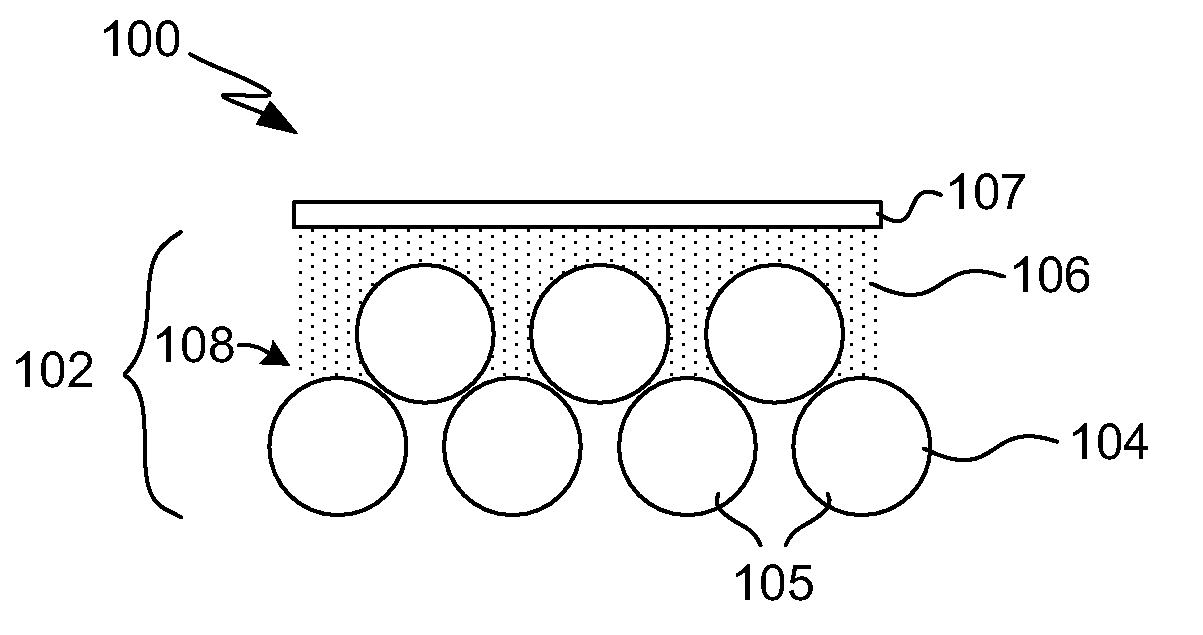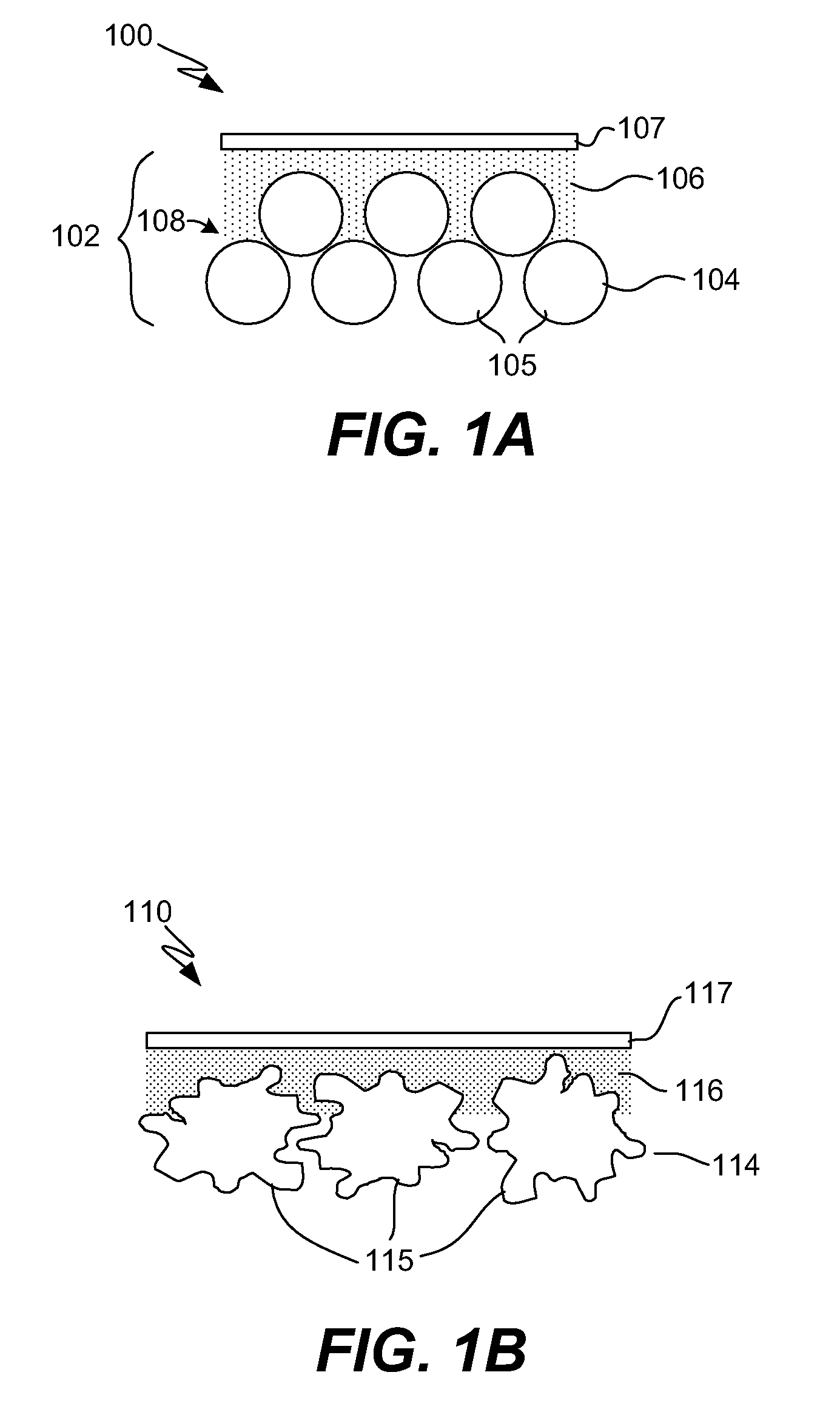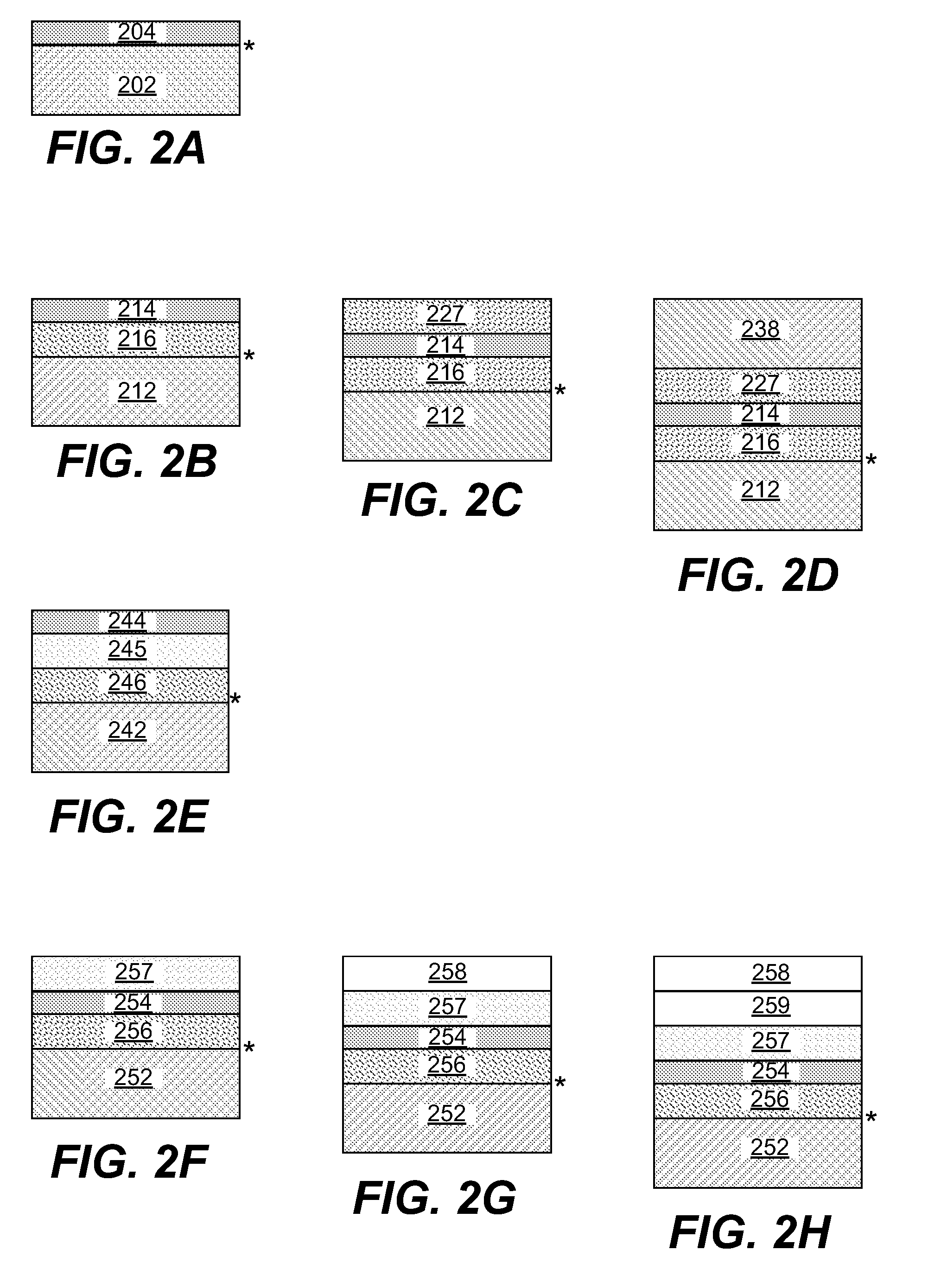Interlocking structure for high temperature electrochemical device and method for making the same
a technology of interlocking structure and electrochemical device, which is applied in the manufacture of final products, cell components, electrochemical generators, etc., can solve the problems that the sintering or chemical bonding between the metal layer and the adjacent ceramic layer is not generally expected, and achieves the effects of improving cell robustness, strong interface, and significant cost reduction
- Summary
- Abstract
- Description
- Claims
- Application Information
AI Technical Summary
Benefits of technology
Problems solved by technology
Method used
Image
Examples
example 1
Tubular Structure Comprising Porous Metal / Porous YSZ / Dense YSZ / Porous YSZ / Porous metal
[0077]1. Water-atomized ferritic steel powder (15-75 μm) is mixed with an aqueous dispersion of acrylic (15 wt % solids), polyethylene glycol (PEG) 6000, and polymethyl methacrylate (PMMA) pore former beads (45-106 μm) in the ratio 10:2:0.5:1.5 (metal / acrylic solution / PEG / PMMA). The mixture is heated to remove the water, melt the PEG, and cure the acrylic. The resulting solid mass is ground and sieved to less than 150 μm. This powder is molded in a cold isostatic press to form a green metal support tube.
2. The PEG (which does not volatilize in reducing atmosphere) is extracted by soaking the green support body in water. The acrylic and PMMA remain, and are subsequently removed during bisque firing.
Alternatively, the PEG, PMMA, and acrylic can be removed by firing in air at about 525° C. This temperature is chosen to completely remove the acrylic but not significantly oxidize the metal. This produce...
example 2
Planar Structure Comprising Porous Metal / Porous YSZ / Dense YSZ / Porous YSZ / Porous metal
[0079]The steps are essentially the same as those presented in Example 1 above, however the metal support 510 is a FeCr die-pressed planar substrate. Also, the current collector 518 is applied as a paste [96 wt % metal, 2 wt % YSZ, 2 wt % hydroxypropyl cellulose (HPC) as a binder, enough IPA to make a spreadable paste]. For improved bonding, the metal particles are decorated with YSZ, as described in commonly assigned co-pending application PCT / US2005 / 043109, incorporated herein by reference. The Electrode 1 512, Electrolyte 514 and Electrode 2 516 components are described in Example 1.
[0080]An image of such a structure in cross-section is provided in FIG. 5B.
example 3
Planar or Tubular Structure Comprising Porous Metal / Porous YSZ / Dense YSZ / Porous Ni—YSZ / Optional Porous Metal
[0081]The steps are essentially the same as those presented in Example 1 and 2 above, however the Electrode 2 Interlayer comprises Ni and YSZ. Electrode 2 Interlayer was applied by brush-painting a paint comprising aqueous acrylic (15 wt % acrylic), YSZ powder (such as Tosoh 8YS), Ni powder, 0.5-3.5 μm acrylic pore former bead, and 7-11 μm acrylic pore former bead in the weight ratio 2.7:0.27:0.27:0.2:0.6. Between 5-50 or 7-15 coats are applied, with complete drying between each coat.
PUM
| Property | Measurement | Unit |
|---|---|---|
| temperatures | aaaaa | aaaaa |
| thick | aaaaa | aaaaa |
| thick | aaaaa | aaaaa |
Abstract
Description
Claims
Application Information
 Login to View More
Login to View More - R&D
- Intellectual Property
- Life Sciences
- Materials
- Tech Scout
- Unparalleled Data Quality
- Higher Quality Content
- 60% Fewer Hallucinations
Browse by: Latest US Patents, China's latest patents, Technical Efficacy Thesaurus, Application Domain, Technology Topic, Popular Technical Reports.
© 2025 PatSnap. All rights reserved.Legal|Privacy policy|Modern Slavery Act Transparency Statement|Sitemap|About US| Contact US: help@patsnap.com



